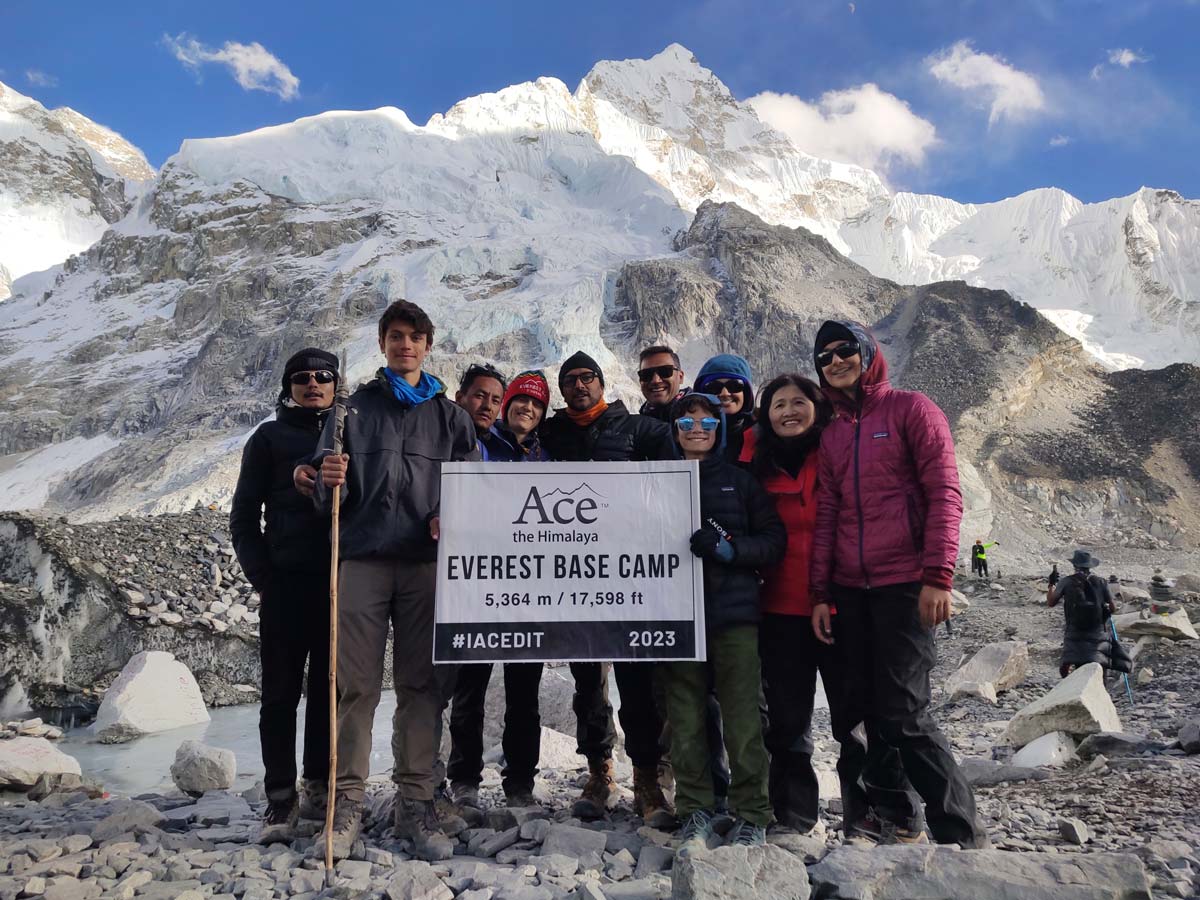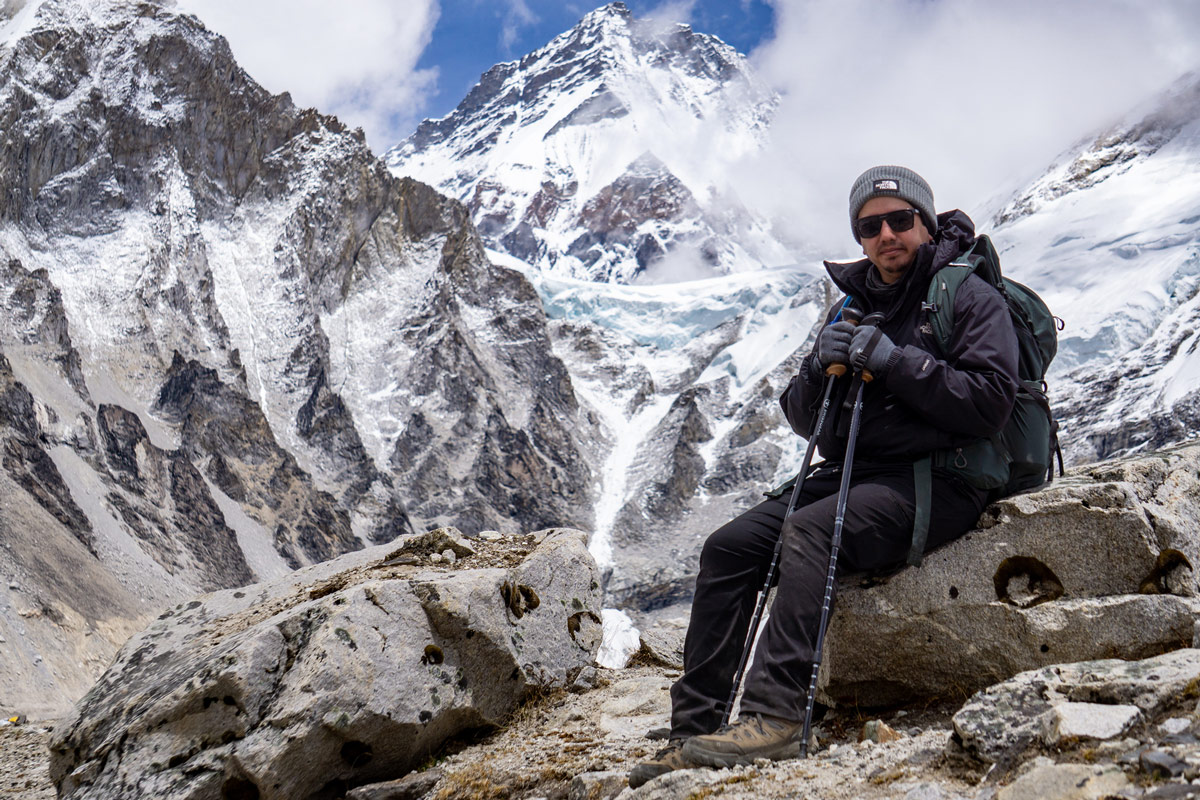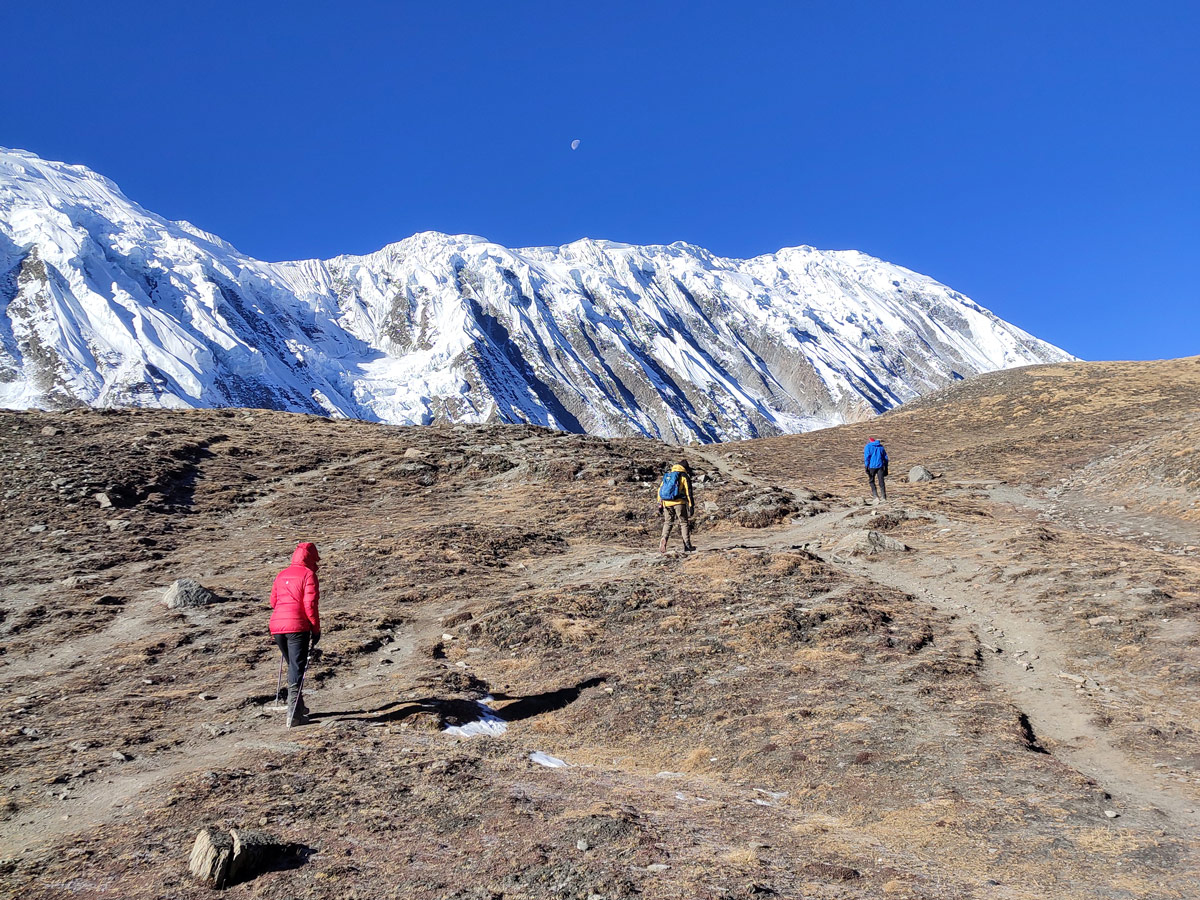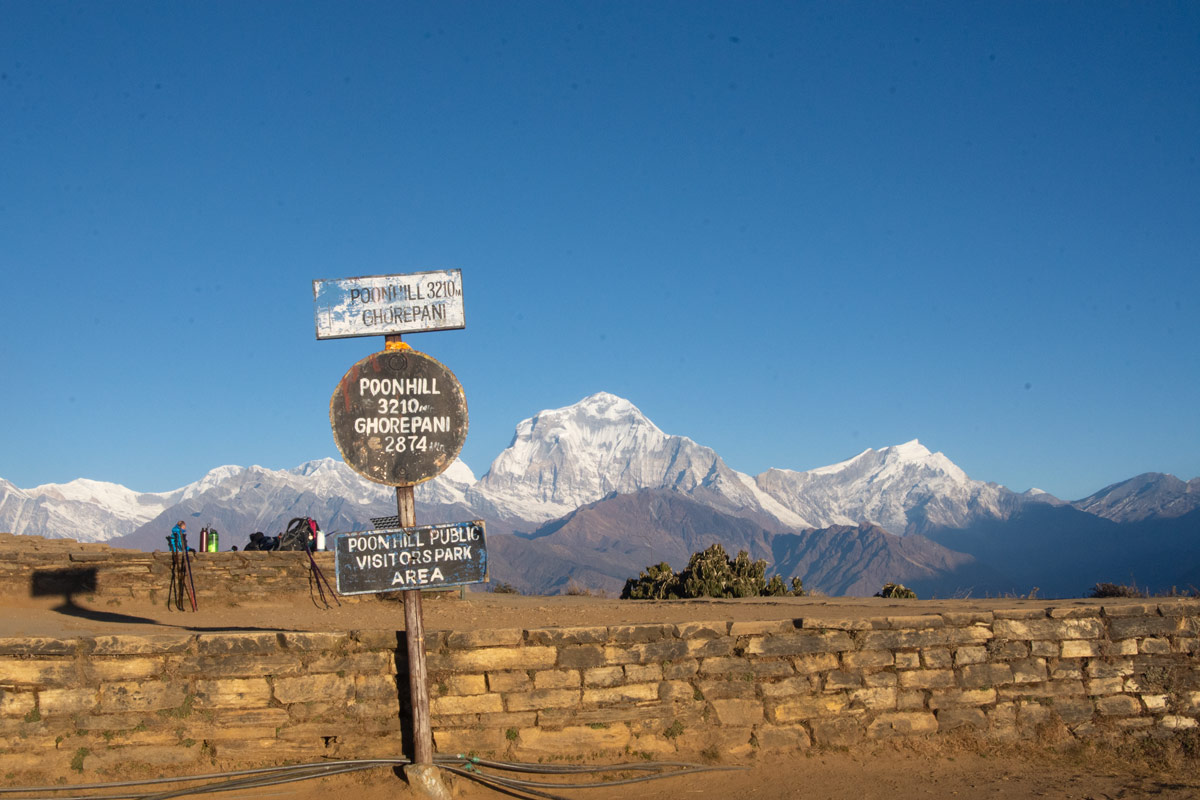The Everest Base Camp trek is one of the most iconic adventures and the best trekking routes in the world with an experience unlike any other. It is adventurous, it is culturally rejuvenating, it is thrilling, and it is full of visual treats.
However, have you even wondered what it would be like to embark on the Everest Base Camp trek with kids and make it a family adventure rather than a solo one? Is that even possible?
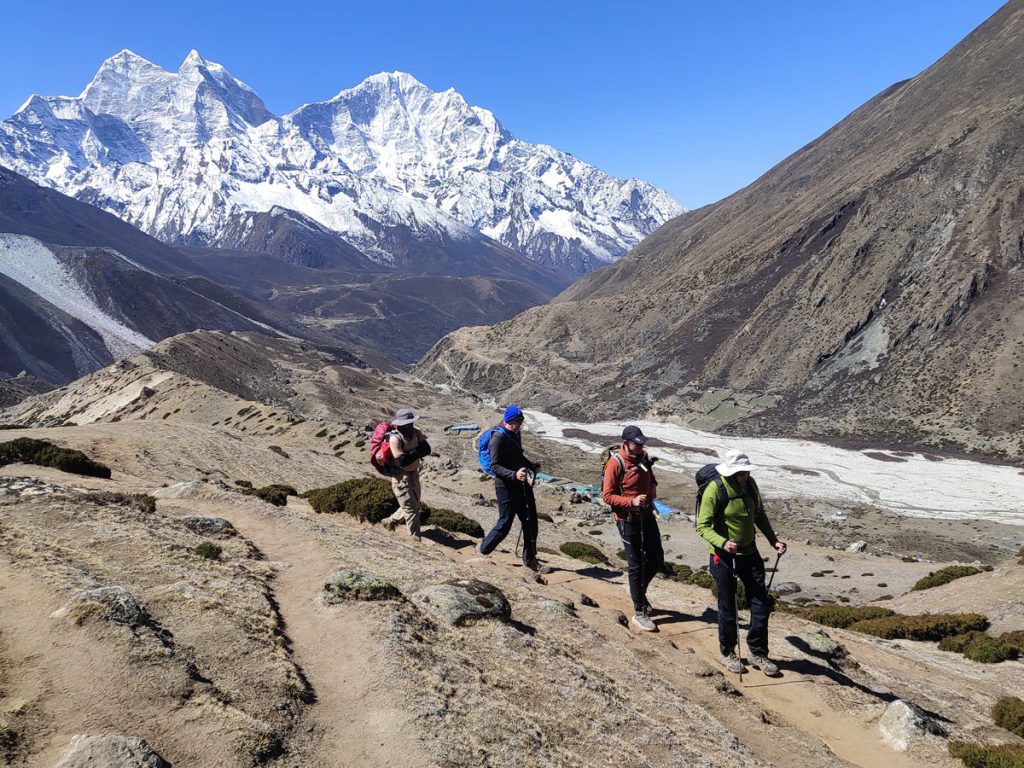
Well, we have the answers to your questions. Starting with the most important one- yes, trekking the Everest Base Camp with kids is possible. Contrary to several myths, Everest Base Camp trekking is not age restricted.
However, the experience might be slightly different than what it would have been otherwise. You also need additional preparation and planning to make it possible, and several other factors should be considered before setting out on this unique family trip.
In this blog, we have compiled everything that you need to prepare for a successful Everest Base Camp trek with kids and family. So read on and make it happen!
Is Everest Base Camp Trek suitable for kids?
When it comes to taking children on the Everest Base Camp trek, different people have different opinions on the internet with some considering the standard age for the trek to be 5-years old, some 10, and some 12.
And if you go on to read everything, you will be left confused whether or not to take your child on this trek of a lifetime. So, let’s simplify it for you.
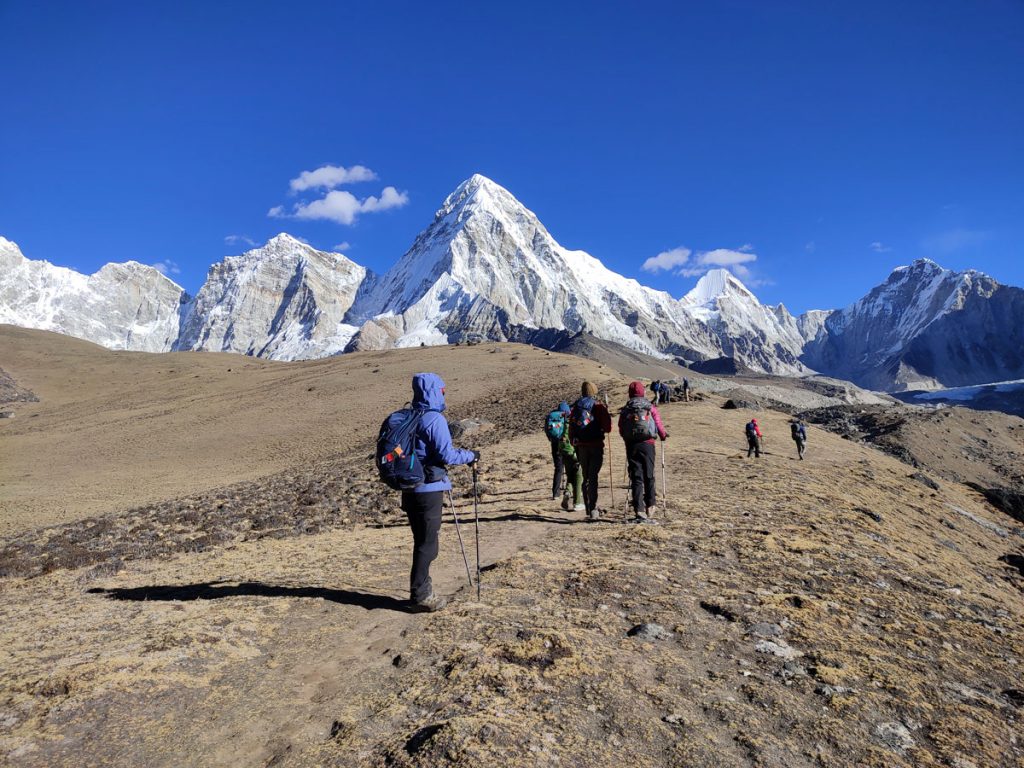
The main reason why the Everest Base Camp trek is considered inaccessible for people beyond a certain age limit is the lack of physical and mental fitness and the maturity to tackle the difficulties of the Everest Base Camp trek.
Therefore, generally, 10-years-old is considered the standard age for children who won’t struggle a lot and become miserable during the trek but rather enjoy the allure of the trek.
However, with proper preparation and training, and keeping in mind the physical fitness, altitude tolerance, and enthusiasm of your kids for outdoor activities, you can certainly be an exception to this standard age rule. And there have been such exceptions before.
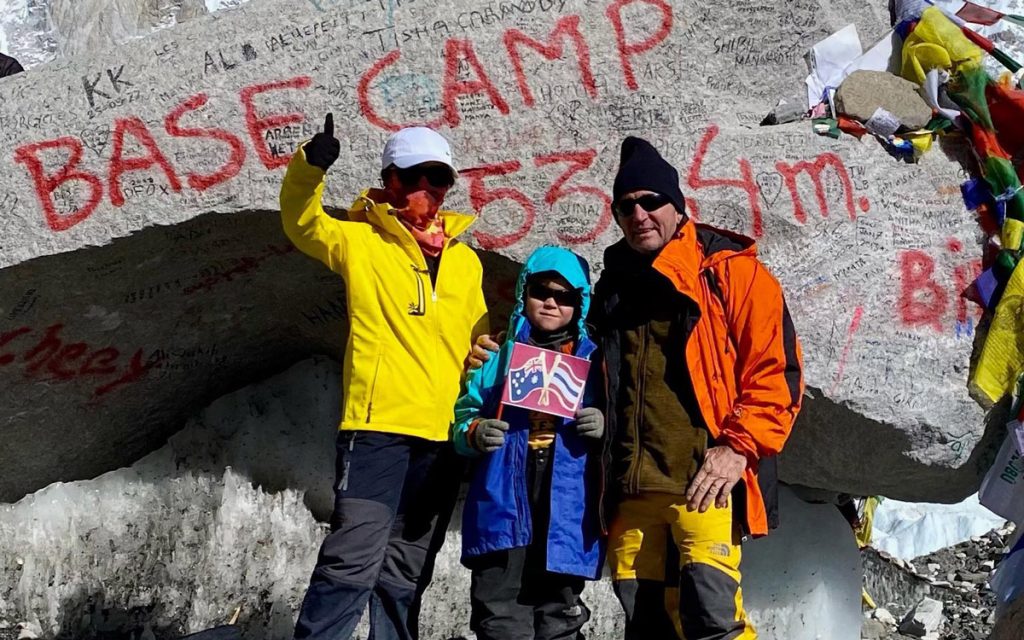
Several young adventurers have taken on the challenge of the Everest Base Camp trek and emerged successfully. Starting with our own example, the youngest trekker of Ace the Himalaya was Gus Man who completed the trek at the age of seven.
Besides this, there have been several other examples like the 6-year-old Maya Bristow, two-and-a-half-year-old Siddhi Mishra, or the youngest person to reach the Everest Base Camp- 2-year-old Carter Dallas from Scotland!
All you need is proper preparation and fitness, and your child might be able to accompany you on this trek. And we are here to help you achieve this preparation and fitness for the Everest Base Camp trek!
Best Time for EBC trek with Kids and Family
Generally, the best time for the Everest Base Camp trek is subjective and depends on your expectations from the trek. Spring (March to May) and autumn (September to November) are considered the peak trekking seasons.
The months of winter (December to February) are considered shoulder months and monsoon (June to August) is usually avoided as it can get very messy and challenging and is not recommended if you are planning to trek with kids.
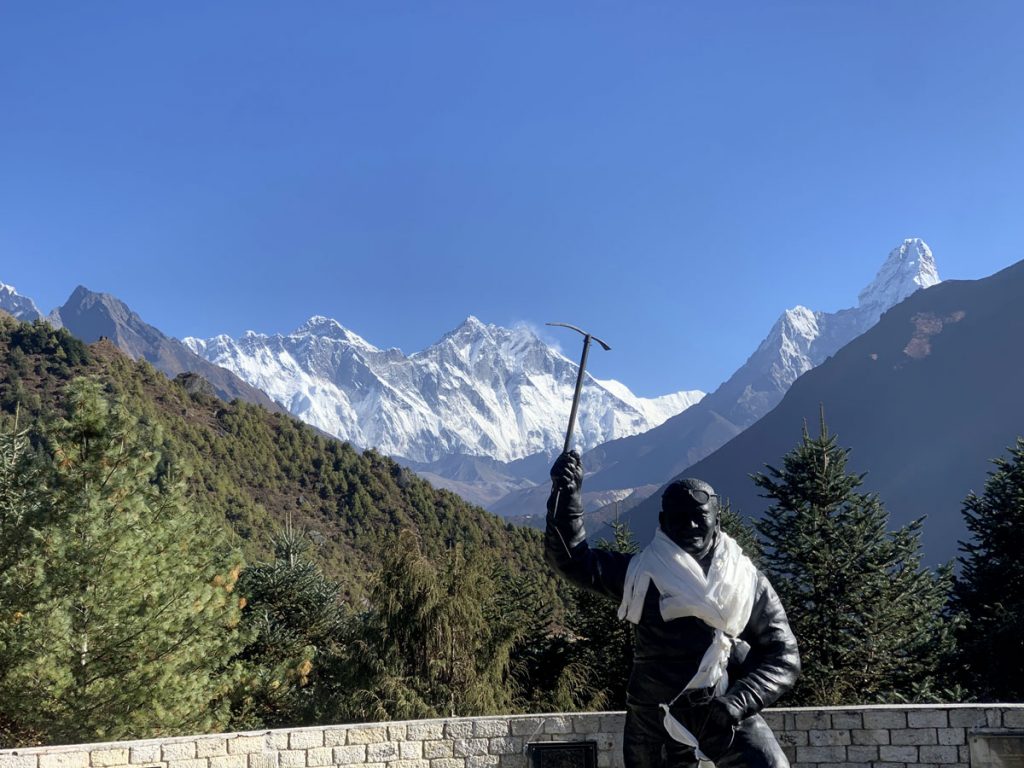
But you can still find your way and trek this region in winters and monsoon with added preparation.
Having said that, this completely changes upon addition of a child in your plan as the success of the EBC trek with a child depends highly on meticulous planning and it makes picking the right season crucial.
Therefore, eliminate monsoon and winter completely from the options. The trails are freezing cold during winter and while you might be able to adapt with some extra clothes and blankets, the same might not be the case for your child.
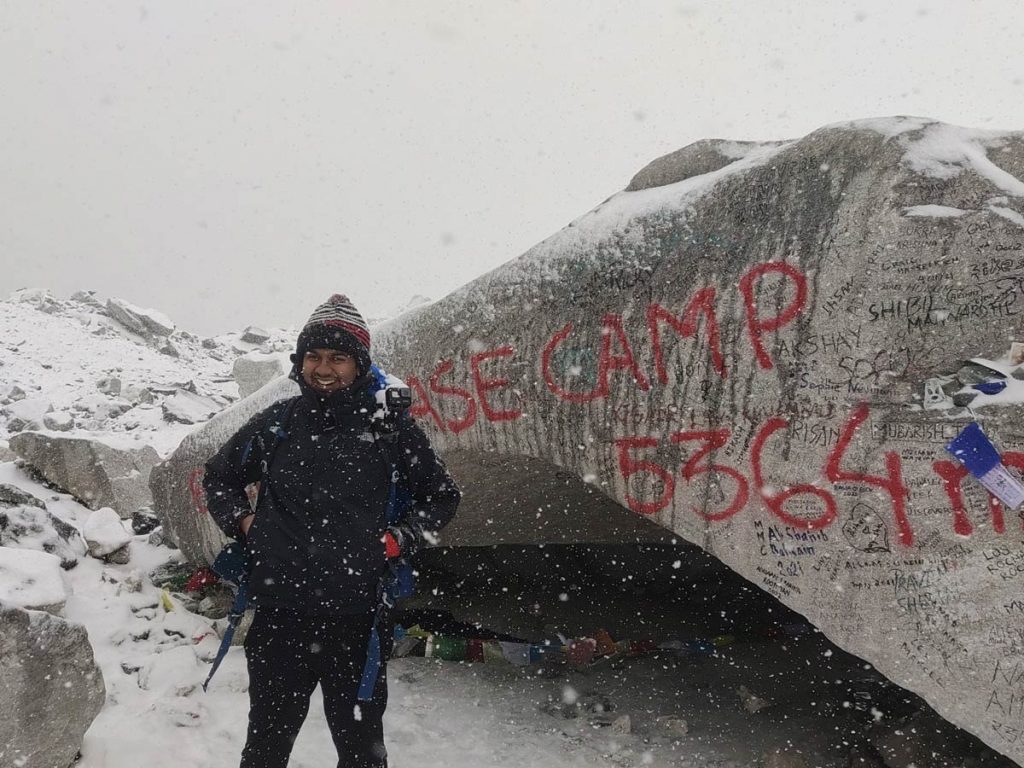
And monsoon comes with lots of slippery trails with a high risk of injury and even landslides which makes it very risky for even an adult, let alone a child. Also, they might also miss out on the panoramas of the mountains which might not be very fun for them.
So that leaves you with two seasons- autumn and spring which is also the best time to visit Nepal. These seasons feature moderate and comfortable temperatures, clear skies, stable weather, and majestic company of nature which makes your experience much better.
However, do look out for the crowd and make your bookings early for accommodation, travel, and partner up with a reputed local trekking agency like Ace the Himalaya to make the journey more comfortable for you.
Preparing for the Trek
Select a Family-Friendly Itinerary
While trekking the Everest Base Camp trek with kids and family, the standard itinerary suitable for adults might not be ideal as it can be too fast paced for kids to catch up to. Therefore, you need to plan a child friendly itinerary.
You can do so by tweaking the standard itinerary to feature ample rest days for acclimatization, gradual ascent, and shorter daily hikes. This makes the trek manageable and enjoyable for the young trekkers.
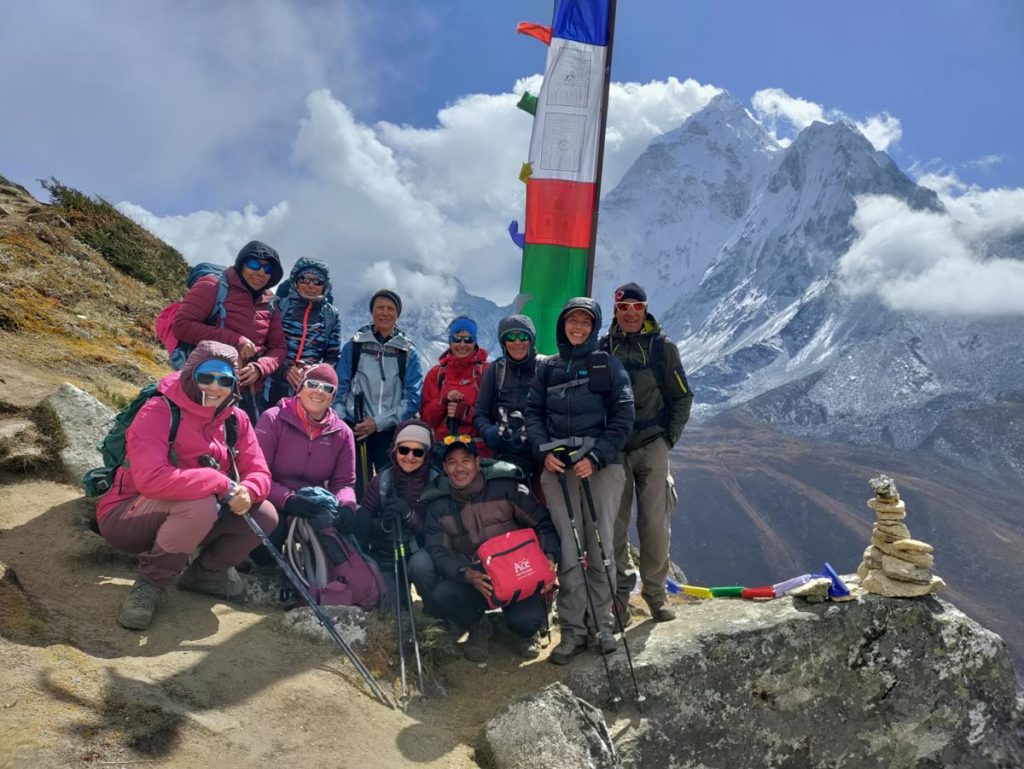
While it is best to ask your trekking agency to customize the itinerary for you, if you are doing it yourself then place your main focus on three aspects of the itinerary- pacing, acclimatization, and flexibility.
Add shorter trekking days covering less distance and most importantly- less altitude difference. Also, allow the kids to take more frequent breaks while trekking rather than rushing them as they have low endurance as compared to adults.
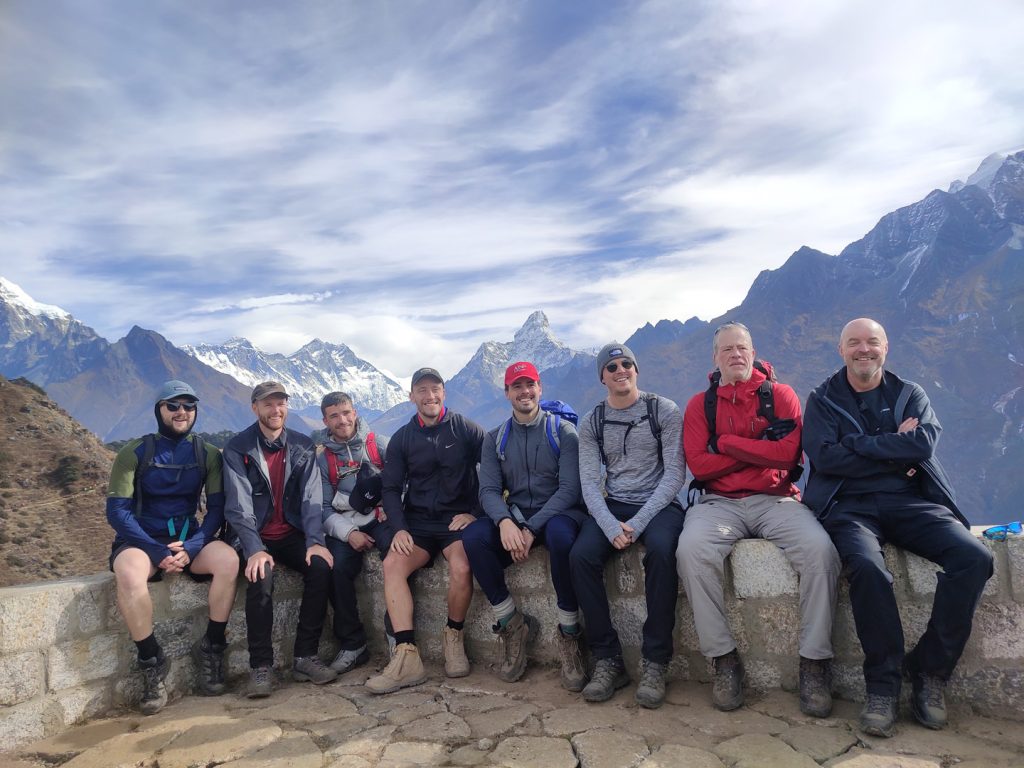
Keep additional acclimatization days and invest time in exploring the villages rather than rushing the trek as it allows the body of the kids to acclimatize well and be prepared for the altitude gain of the following day.
Next and most important, don’t keep a tight schedule. Have a flexible itinerary allowing you for modifications, delays, and extra days in case of slow walking pace, bad weather, or any medical emergency. Be prepared to return from the middle of the trek too!
Physical Preparation
Trekking to the Everest Base Camp can be demanding, even for adults. Therefore, while trekking with kids, it is important that you prepare them well in advance for the physical challenges of the trek.
The general fitness regime of adults including strength training and heavy exercises might not be suitable for kids. So, make sure to plan a different training regime based on their stamina and endurance.
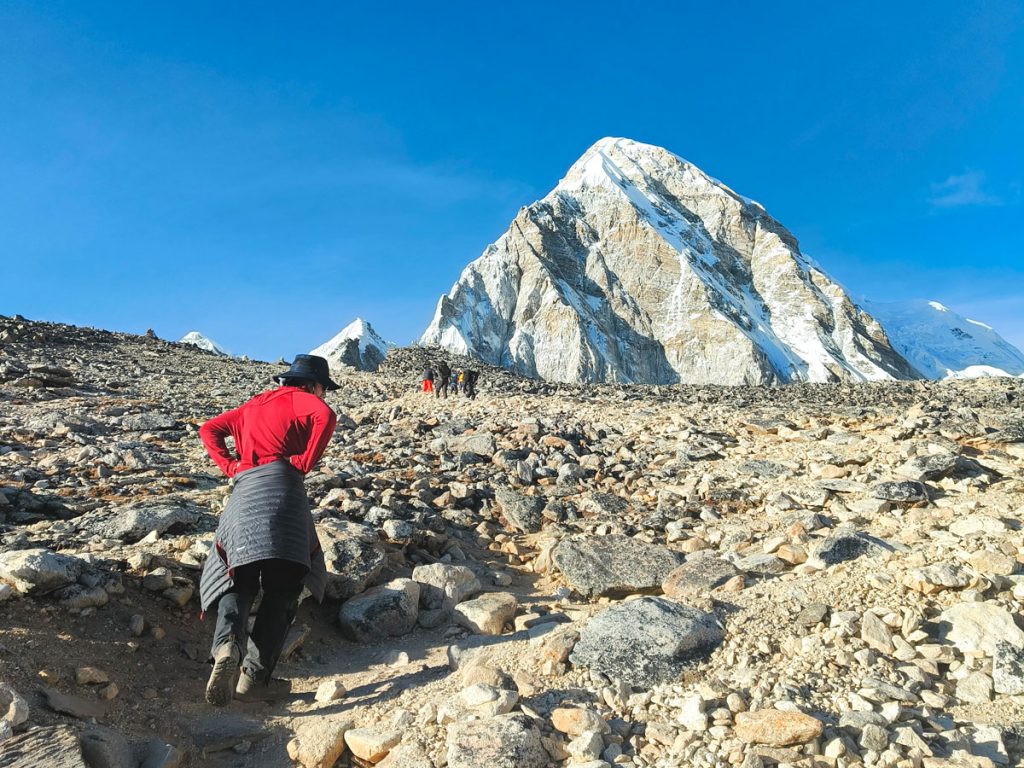
Cardiovascular exercises like running, swimming, cycling, and even dancing can be good for kids as it strengthens their heart and lungs while also getting them used to long hours of strenuous activities.
Take them on small hikes and walks regularly and preferably choose an area with slight elevation gain to mimic the actual conditions of the Everest Base Camp tail. If that is not possible, you can also indulge them in stair climbing.
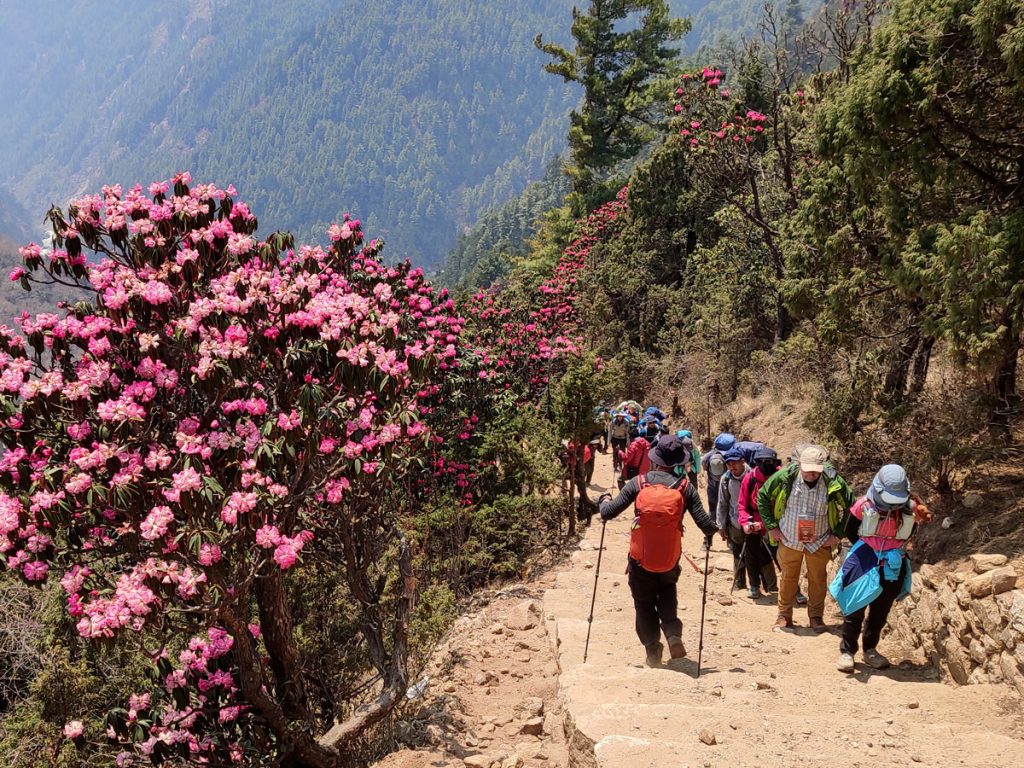
Make the training fun by indulging them in fun outdoor games and challenges or family competitions as it makes them enjoy themselves while still achieving good stamina and endurance.
Start these preparations at least six months prior to the trek so that they get accustomed to the dreaded soreness that follows after strenuous physical activity. Also indulge them in stretching exercises.
Mental Preparation
As much as the trek can be tough on them physically, it can also take a toll on their mental well-being as they are away from their friends in an environment absolutely different with a very strenuous daily routine.
Therefore, you need to prepare them mentally while giving them regular information about the trek as it allows them to set realistic expectations about the experiences they will have and the people they will meet.
Also, don’t brush it off by saying that the trek is not tough. Keep them informed about the challenges of the trek including the cold, the basic living conditions, the daily long walks, and also the insufferable soreness that follows.
You can also show them pictures and videos of the Everest Base Camp trek to prepare them. Indulge them in breathing exercises and practices of mindfulness like meditation to keep them calm in challenging conditions.
Nutritional Needs
To maintain the energy levels of the kids and prevent any unwanted illness and even altitude sickness, it is important to be watchful about their diet and nutrition during the trek.
The teahouses provide nutritional food during the Everest Base Camp trek. Therefore, you should encourage your kids to eat the delicious local cuisines which help them to achieve a balanced diet.
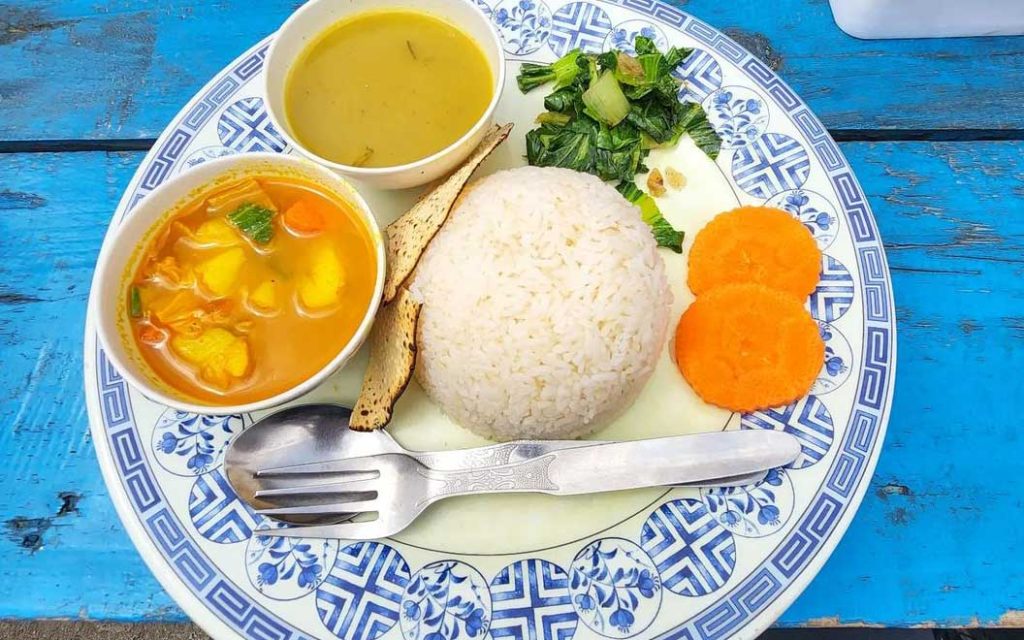
Besides that, ensure that they are well hydrated. Carry oral rehydration salts and give them as much water as possible throughout the day as dehydration is very common during high altitude treks.
Also pack in some extra nutritional snacks like dry fruits, protein bars, nuts, and chocolates for quick energy supply.
Gear essential for Kids
Carrying the right gear is important to ensure the safety and comfort of your kids. While the standard packing list for Everest Base Camp trek usually suffices for it, you might need to make a few changes based on your kids.
The basics of packing should always include clothes suitable for layering and items like thermals, fleece jackets, waterproof pants and jacket, and a warm hat to combat the cold temperatures.
Make sure the hiking boots are comfortable and well broken-in because sore feet and blisters can make this enjoyable adventure a painful one.
Enhancing the experience for kids
While the Everest Base Camp trek is a highly enjoyable adventure filled with visual treat and enriching cultural experiences, the challenges might at times take a toll on the spirit of kids.
Therefore, keeping your kids engaged and entertained throughout is important to ensure that they enjoy the journey rather than enduring it. It also eases the physical challenges as they are distracted throughout.
You can start with a scavenger hunt and make a list of flora and fauna like the rhododendron, Himalayan Tahr, or interesting birds for the kids to spot. It keeps them attentive and connected to nature too!
Next, you can divide the Everest Base Camp trek distance into several small segments, and you can give the kids small rewards upon completing each segment. Do the same for achieving a milestone like completing a taxing ascent or reaching a viewpoint.
Encourage the kids to indulge in activities like photography or journaling where they can stick memories of the trek like some leaves and other non-intrusive things into their journal.
The clear skies during the trek, unlike the polluted skies of urban areas, can also be the perfect spot for stargazing where you can teach the kids about several constellations and celestial bodies!
The EBC trek is also a journey of cultural exploration, so encourage your kids to indulge with the locals and participate in the rituals and traditions. Tell them about the local legends and myths to make their experience mystical.
This could also be the time to share the brave history of Everest and tell them about famous mountaineers. Teach them a few Nepali phrases and make sure to visit the monasteries along the way.
You can also teach them new skills like map-reading, wilderness skills, and the basics of first aid.
Safety Measures and Emergency Preparedness
When trekking the Everest Base Camp with kids, you have to take additional measures to ensure their safety and also be absolutely prepared for any kind of emergency, medical or otherwise.
First of all, you have to be careful about the ascent profile because although the general elevation gain during the EBC trek might be suitable for you, it is often harsh on children. So, plan a slow ascent profile with shorter sections to cover every day.
This will allow the bodies of the kids to acclimatize well and adapt to the harsh altitude along with decreasing the daily kilometers and reducing the physical challenge.
Make sure to keep multiple acclimatization days in your itinerary. Symptoms of altitude sickness include the likes of nausea, vomiting, headache, dizziness, and more, and recognizing the symptoms early in kids is important to prevent altitude sickness.
Encourage your kids to drink lots of fluids and give them nutritious snacks like protein bars time and again.
Hire local guides and partner up with local travel agencies who are experienced in dealing with family treks and are trained for emergencies.
If you are traveling with a guide, they will have first-aid training. However, it is important for at least one family member to receive proper first-aid training before the trek. Learn how to treat basic injuries and conditions like hypothermia.
Carry a full-fledged first-aid kit with every important medicine and ointment keeping in mind the potential hazards that might come your way. Carry bandages, antiseptic wipes, blister care, fever reducers like ibuprofen or acetaminophen (suitable for children), and any prescription medications.
Ensure that you have all the important local contact information and although Wi-fi and internet services are available in the region, it is best to obtain a local SIM card to stay connected.
Get comprehensive travel insurance for all the members with emergency evacuation in case of emergencies. Keep a track of the weather ahead throughout your trek so that you can plan your next day accordingly.
